
TVS NTorq 125 Call Of Design Concludes. Winner Takes Home A Brand New...
- Dec 14, 2019
- Views : 105920

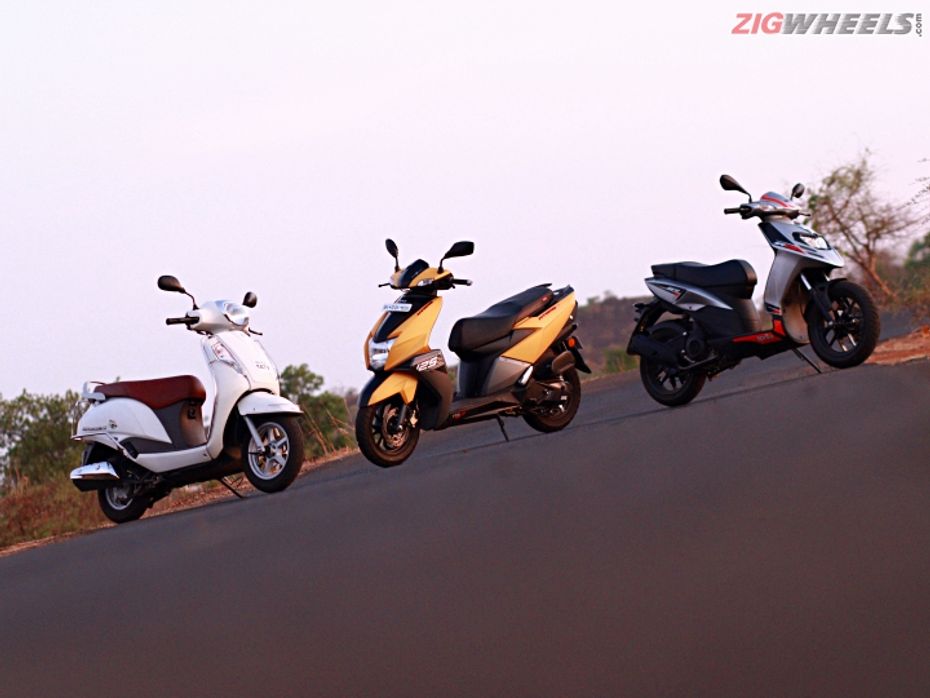
The TVS NTorq clearly proved its worth in our NTorq vs Grazia comparison, almost to the point of having us believe that it is the best 125cc scooter in India today. But then, hot on its heels was the newly launched Aprilia SR 125, which is a detuned version of the properly exciting SR 150. And let’s not forget the family favourite 125cc scooter, the Suzuki Access. So in this new company, does the TVS NTorq do enough to take home the crown?
Design
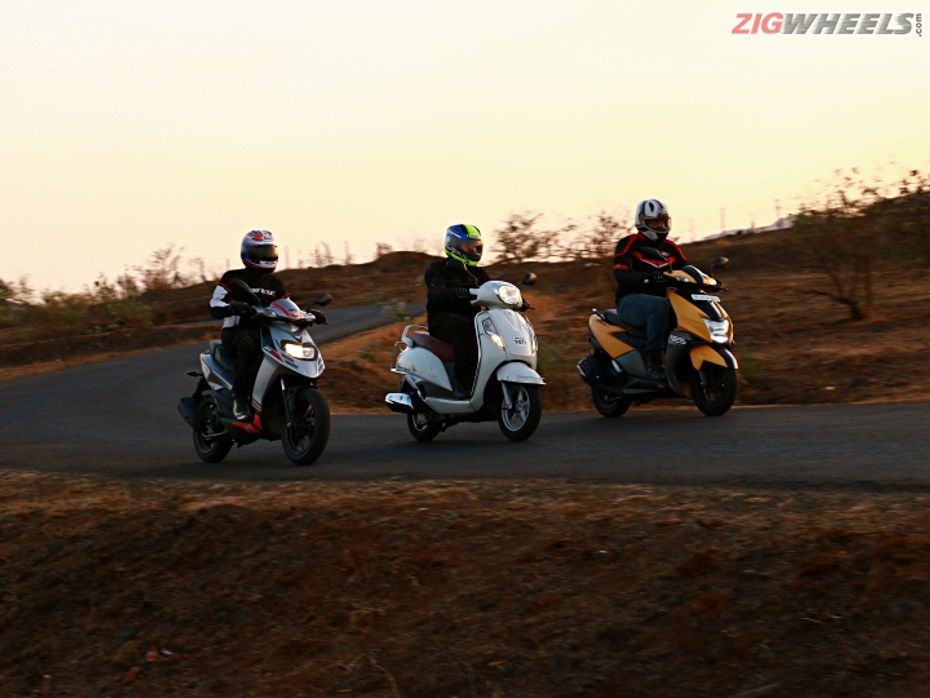
125cc scooters need to have a bit more visual flair, considering how they are meant to stand a segment above the 110s. And in the present company, the Access stands as the odd one out. By no means is it a bad looking scooter, but it showcases a more traditional design with a retro touch to it. While there are takers for this kind of design, it's the most elderly looking scooter when parked next to the TVS and the Aprilia. And while the NTorq’s design with chiselled and edgy body lines looks quite attractive, there's something about the SR 125 that is just so appealing. We personally can't put a finger on whether it's the slim profile, the tall riding stance or those big 14-inch alloys. Overall, it just feels like a proper Italian beauty.
Features & Practicality
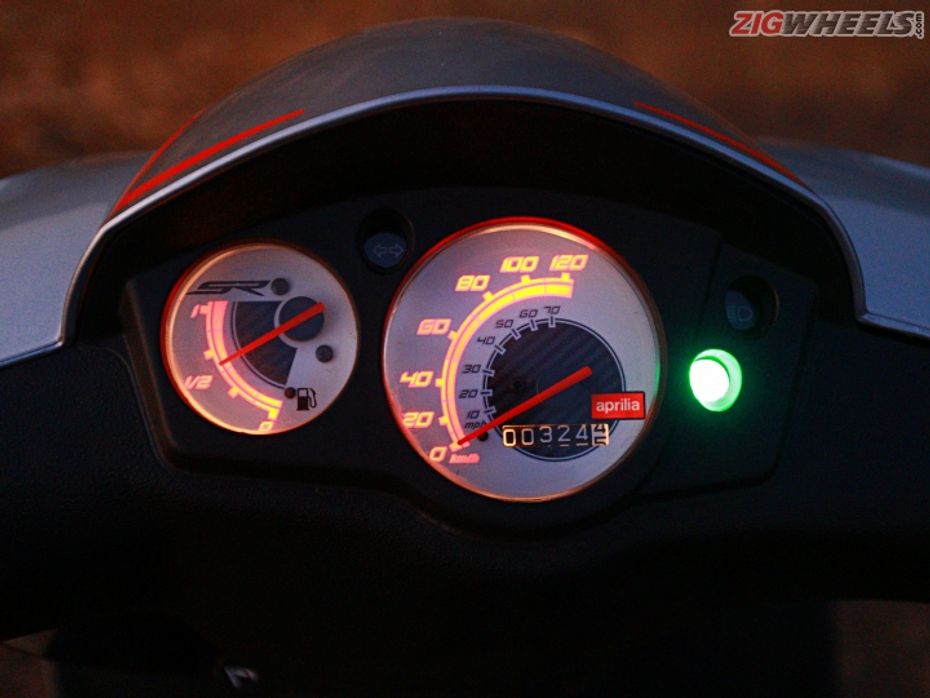
The instrument cluster on the SR 125 is a fully analogue setup so there's no trip meter here either. Plus in terms of conveniences, you don’t even get a charging port or a boot light in the underseat storage. And while the dual-halogen headlights do look good, they do a fairly inadequate job of illumination once the sun goes down.
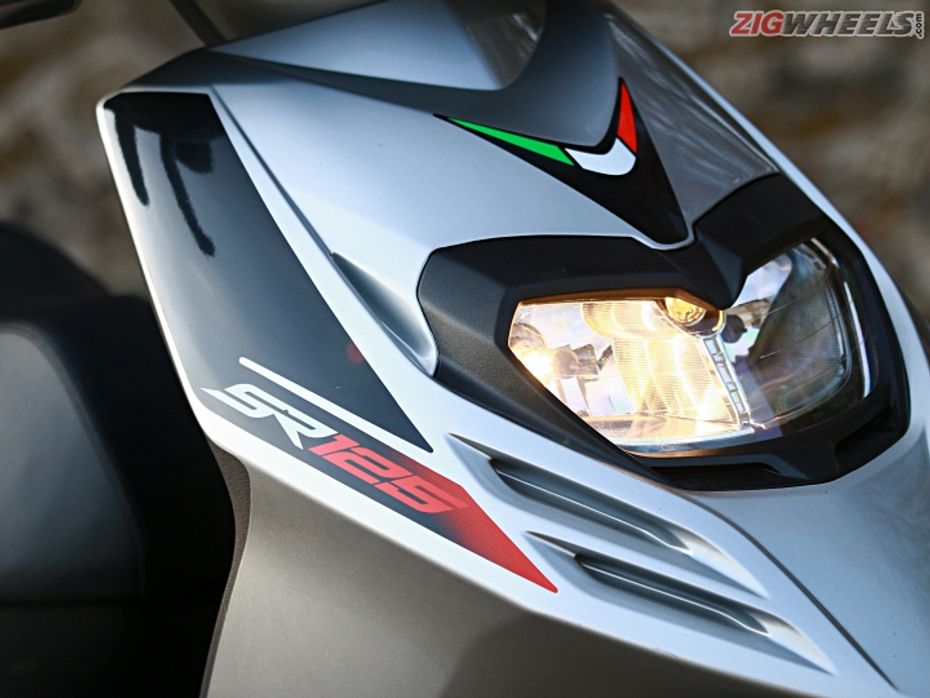
The rearview mirrors don’t seem to offer much visibility as the stalks are extremely short and can barely be adjusted or moved around.
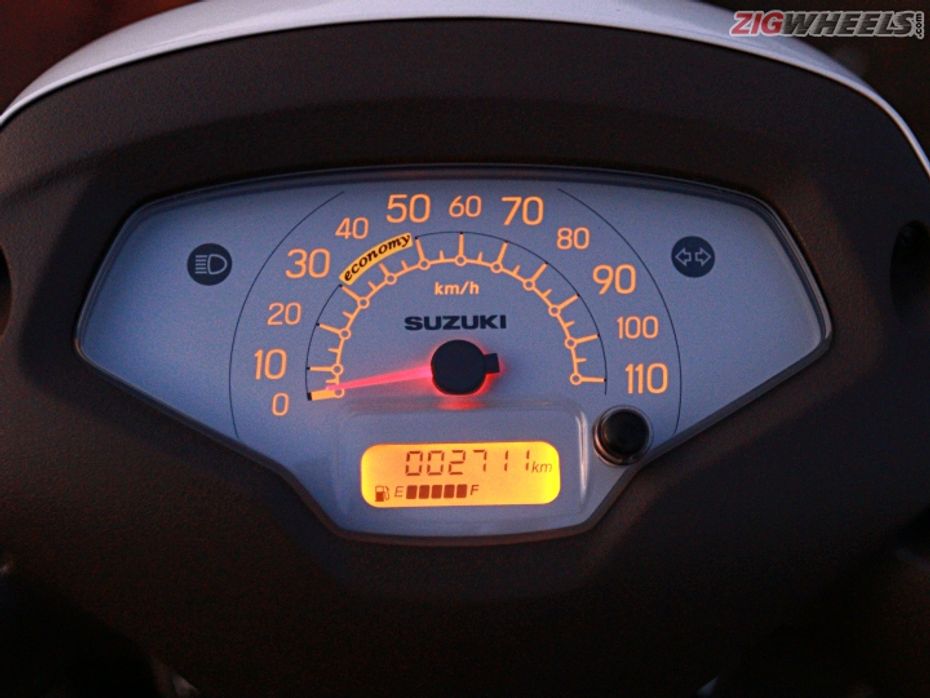
The Access too doesn't score much on the outright feature front. Its console includes a digital odo, two tripmeters and a fuel indicator along with an analogue speedo - pretty much par for the course. Illumination from the rectangular headlight is admirable though and rearview mirrors also offer clear visibility.
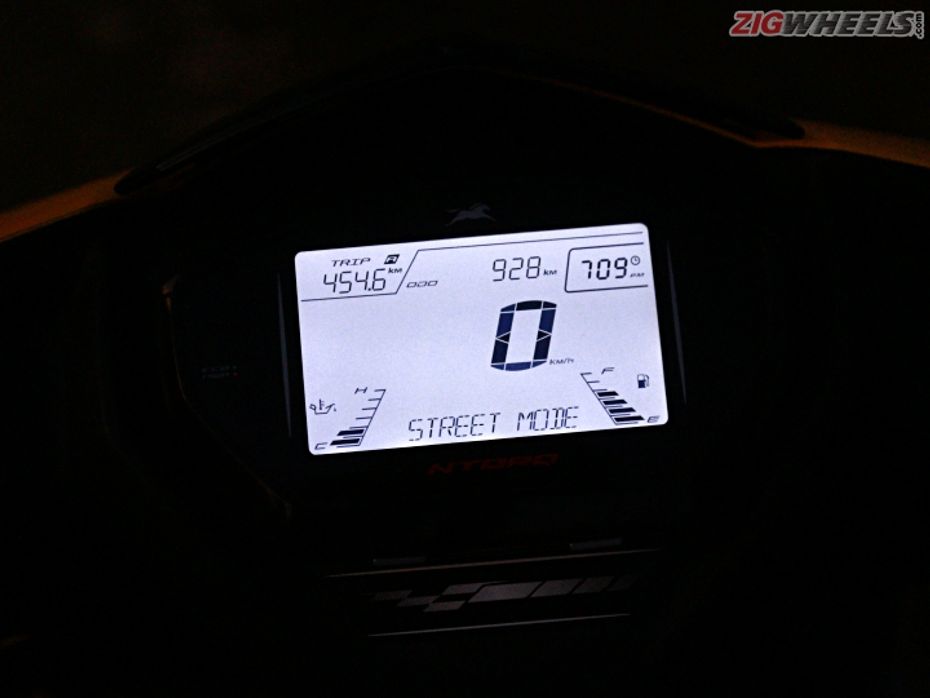
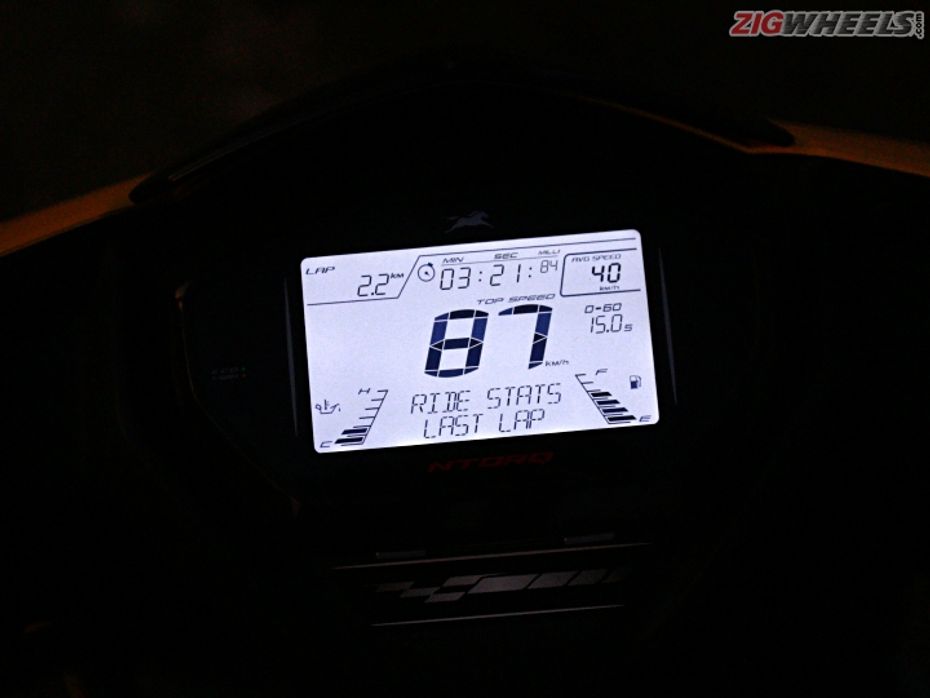
Other features include a custom rider name that flashes on the display every time you switch on the ignition. Then there’s a ‘do not disturb’ mode, auto-reply SMS and overspeeding alert, all of which can be accessed in ‘Street Mode’ on the console. The ‘Race Mode’ here allows riders to record top speed and lap times. A bit much? Youngsters might say otherwise. Basic information includes a speedometer, two tripmeters, odometer, fuel gauge, time and engine temperature as well, though there’s no tachometer here.

While the cluster scores high points, the headlight itself isn’t as bright as the Access’, although it’s a fair shade better than the SR’s. The mirrors are derived from the RTR 200 and provide excellent rear visibility.
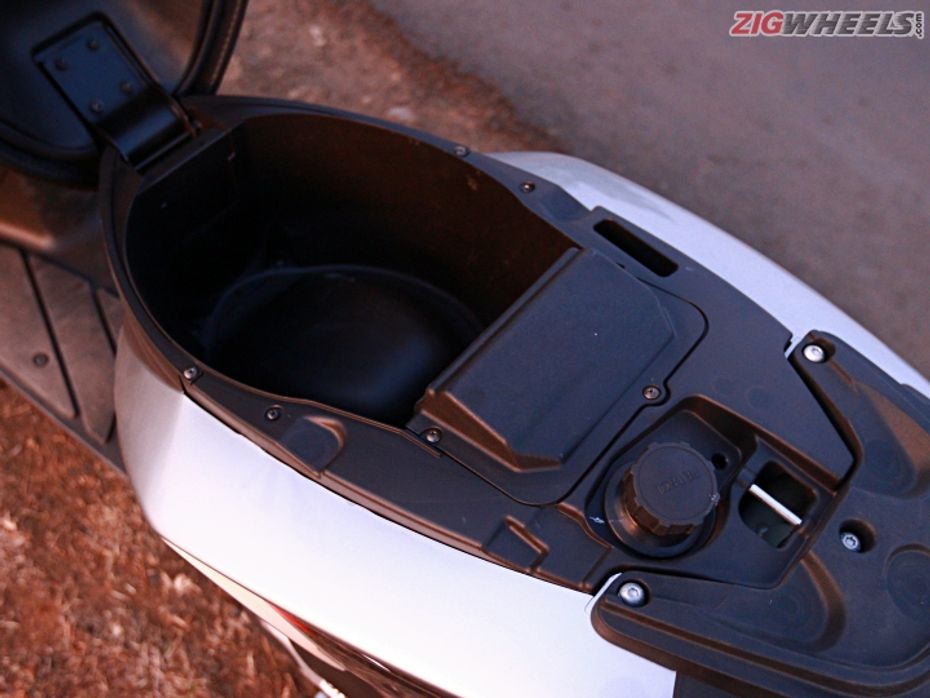
The SR’s lack of practicality can be seen with the underseat storage as well, which is the smallest we’ve seen on any scooter. Here, the Suzuki and the TVS are almost at par with each other, with 21.8 litres and 22 litres of storage respectively.
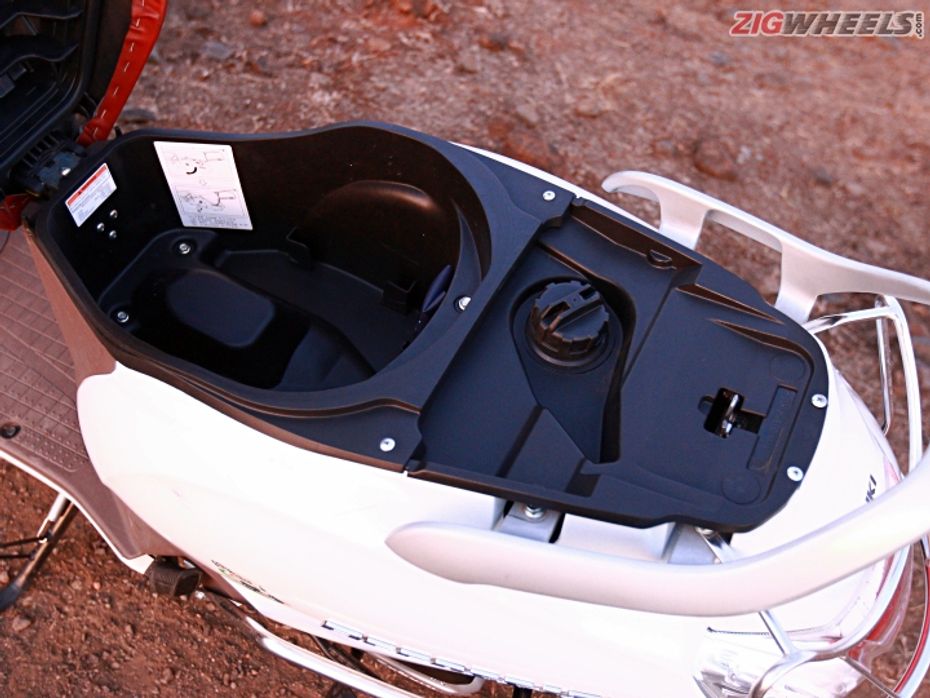
The difference though lies in the way space is offered. The Suzuki gets a deeper boot whereas the NTorq gets a longer one, with decent depth on offer.

Another practical bit in the NTorq’s advantage is that it gets an LED light in the boot - an immensely useful feature in the dark. There’s also an integrated USB charging port.
One thing that both the Aprilia and TVS miss out on is cubby storage behind the front apron, which the Suzuki gets (big enough to fit a 1-litre bottle). There is a DC socket on top of it to charge your devices as well. But this storage compartment isn’t covered. So, while riding, you need to be careful over the very sharp bumps, or else your phone might be destined to get a taste of the tarmac.
Engine & Performance
Surprisingly, the SR 125 doesn’t live up to the adrenaline rush that its elder sibling, the SR 150, offers in abundance.
The Suzuki Access 125 is lighter and thus proves to be quicker than the SR 125. The roll-on times are also quicker by almost 2 seconds.
The TVS Ntorq proves to be almost as quick as the SR 150, setting a benchmark in the 125cc scooter segment.
|
TVS NTorq |
Suzuki Access |
Aprilia SR 125 |
|
|
Engine Type |
3-valve, single-cylinder, air-cooled, OHC |
2-valve, single-cyclinder, air-cooled, SOHC |
3-valve, single-cylinder, air-cooled, SOHC |
|
Displacement |
124.79cc |
124cc |
124.49cc |
|
Power |
9.4PS@7500rpm |
8.7PS@7000rpm |
9.7PS@7250rpm |
|
Torque |
10.5Nm@5500rpm |
10.2Nm@5000rpm |
9.9Nm@6250rpm |
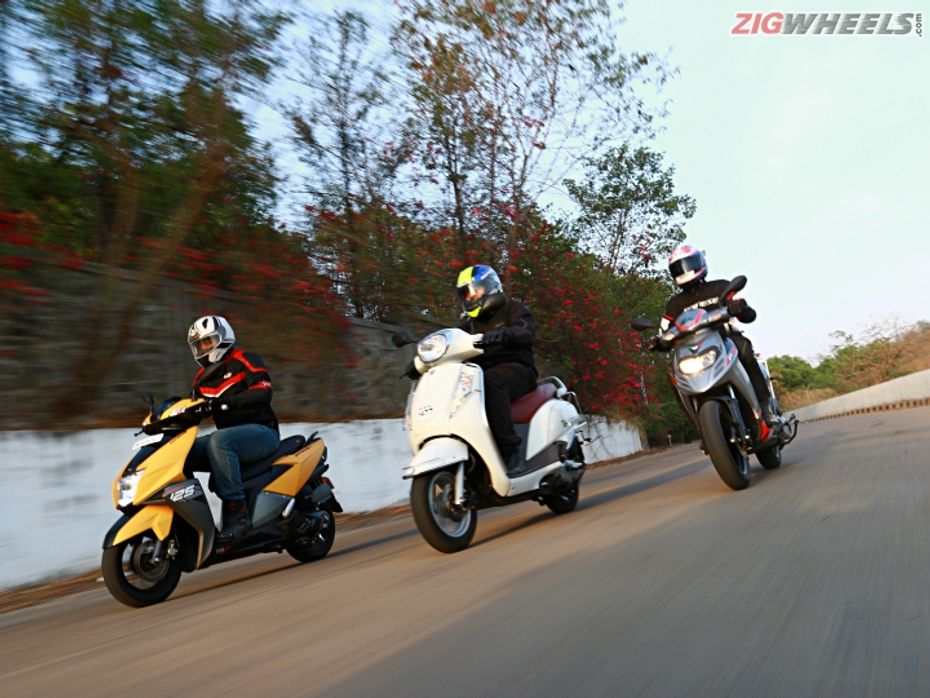
The Aprilia SR 150 had set a benchmark for performance scooters in India. So we were expecting a lot from the SR 125. Shockingly though, with 9.71 seconds on the clock, it’s the slowest to 60kmph here. This is down to the fact that not only does its engine make the least amount of torque in this bunch, but at 115kg, it’s the second heaviest of the lot as well. Plus its largest in class 14-inch wheels also mean that the scooter needs to overcome more rolling inertia to get off the line.
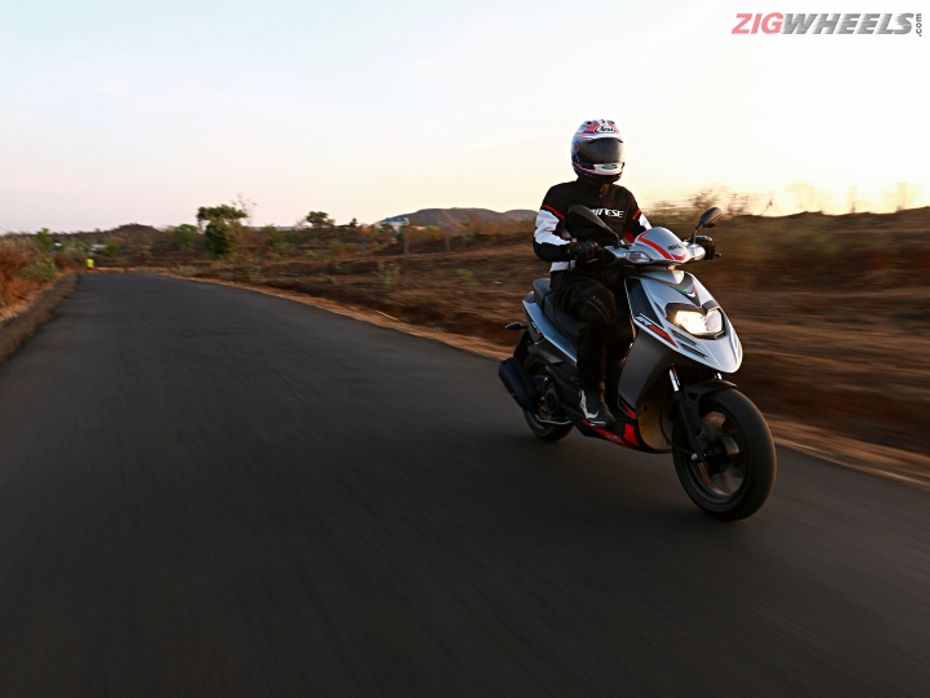
Once you pick up speed, you need to roll on the gas a lot more here, in comparison to the other two. The same is evident from the 20-80kmph kick-down time of 18.79 seconds, which again is the slowest of the lot. That said, it can manage a true, VBOX tested top speed of 98kmph, with the speedometer optimistically displaying over 120kmph. Despite this, it still isn’t the fastest scooter here.
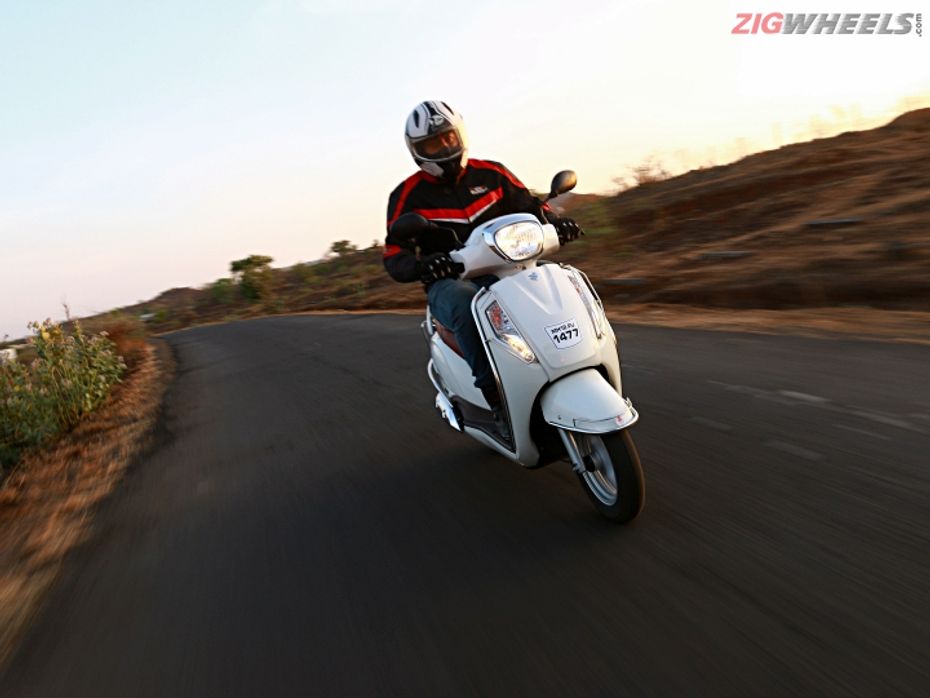
The second best performer here is the Suzuki Access. Despite the mix of metal and plastic body panels, the Suzuki Access is the lightest scooter here, with a kerb weight of 102kg (same as the Honda Cliq). As a result of this weight reduction, the scooter accelerates to 60kmph in 9.2 seconds. The motor feels stress-free even riding at its maximum true speed of 89kmph. You also need to work the throttle a lot less to overtake vehicles in the city. The same is noticeable in its 20-80kmph roll-on acceleration time of 16.41 seconds.
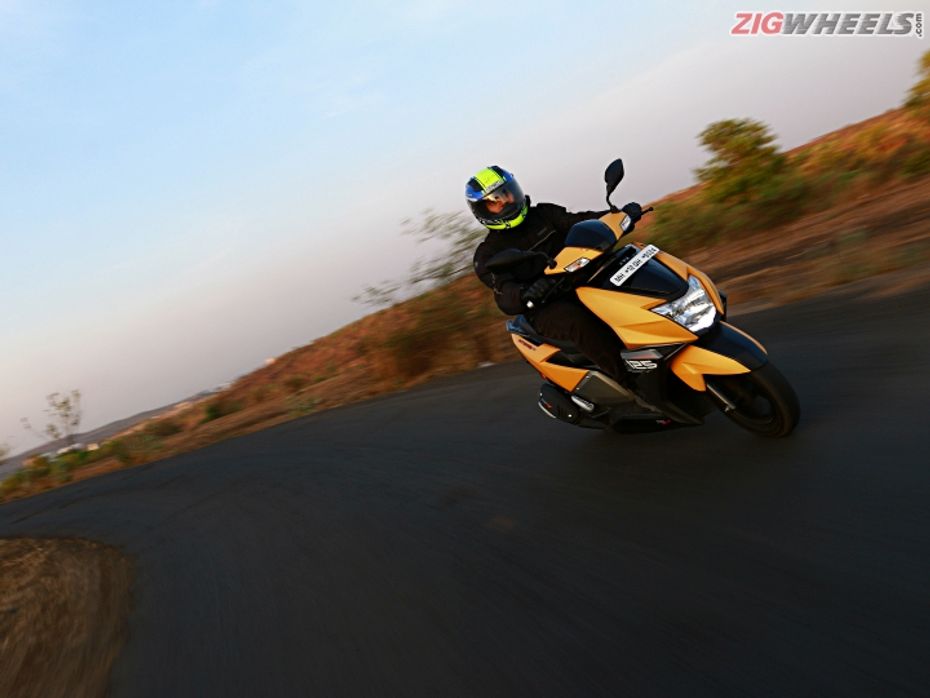
Ride & Handling
On the Aprilia SR 125, handling prowess is offered at the expense of ride quality, which is mercilessly stiff.
Comparatively, the ride quality of the Suzuki Access is very forgiving. But don’t expect it to be a corner junkie.
The ride quality of the NTorq is clearly unmatched, with no compromise on cornering abilities. You can push it as hard as you can push yourself. Mid-corner though, it doesn’t feel as confident as the NTorq.
|
TVS NTorq |
Suzuki Access |
Aprilia SR 125 |
|
|
Wheelbase |
1285mm |
1265mm |
1365mm |
|
Ground Clearance |
155mm |
160mm |
155mm |
|
Kerb Weight |
116.1kg |
102kg |
115kg |
|
Tyre (Front) |
Tubeless 100/80-12 |
Tubeless 90/90-12 |
120/70-14 |
|
Tyre (Rear) |
Tubeless 110/80-12 |
Tubeless 90/100-10 |
120/70-14 |
|
Brake (Front) |
Disc: 220mm Disc |
Drum/Disc |
220mm Disc |
|
Brake (Rear) |
130mm Dia Drum |
Drum |
140mm Drum |
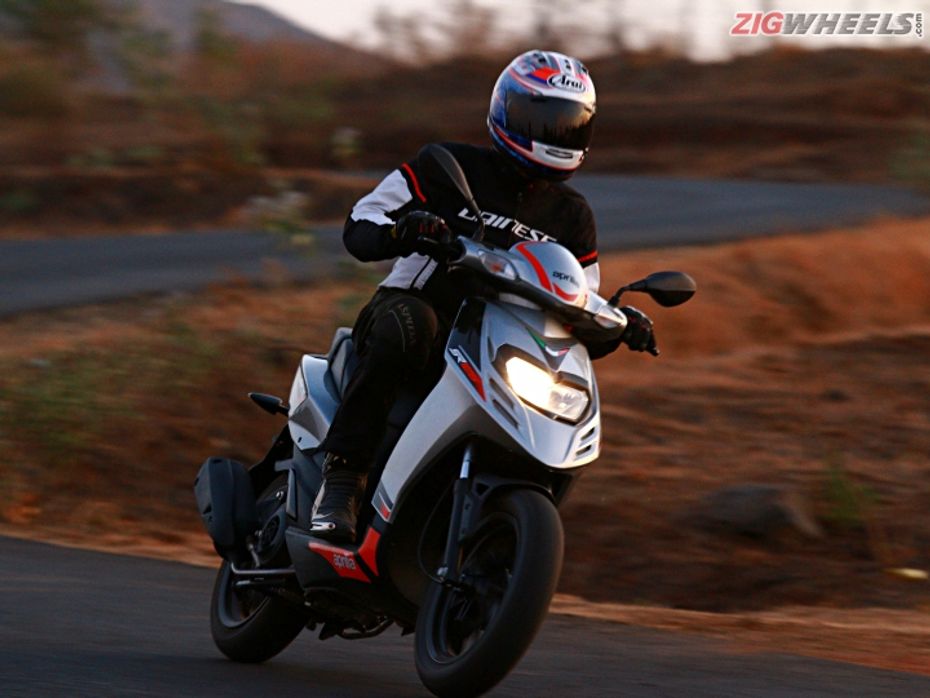

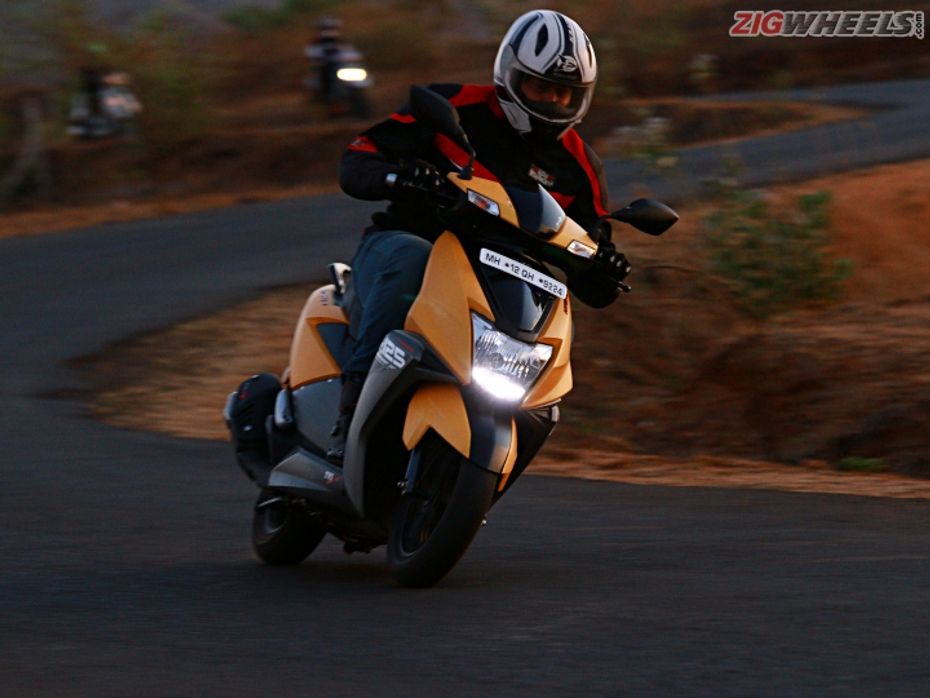
We already know that the NTorq handles really well. It’s very nimble and changes direction quickly, and the TVS Remora tyres do an admirable job of providing grip. That said, it doesn’t have the same level of mid-corner stability that the Aprilia has, but it’s still better than a lot of other scooters we’ve ridden. That aside, the ride quality offered by the NTorq sets a new benchmark in the segment. While we originally believed that the Access’ plush ride would be the most comfortable amongst the three, after we rode it back to back with the NTorq, it was actually the TVS that came out on top. The way the NTorq handles bad roads is really incredible. Its suspension offers a sense of pliancy that's simply unmatched by any other scooter, yet at the same time, it doesn’t feel wallowy after tackling potholes and bumps.
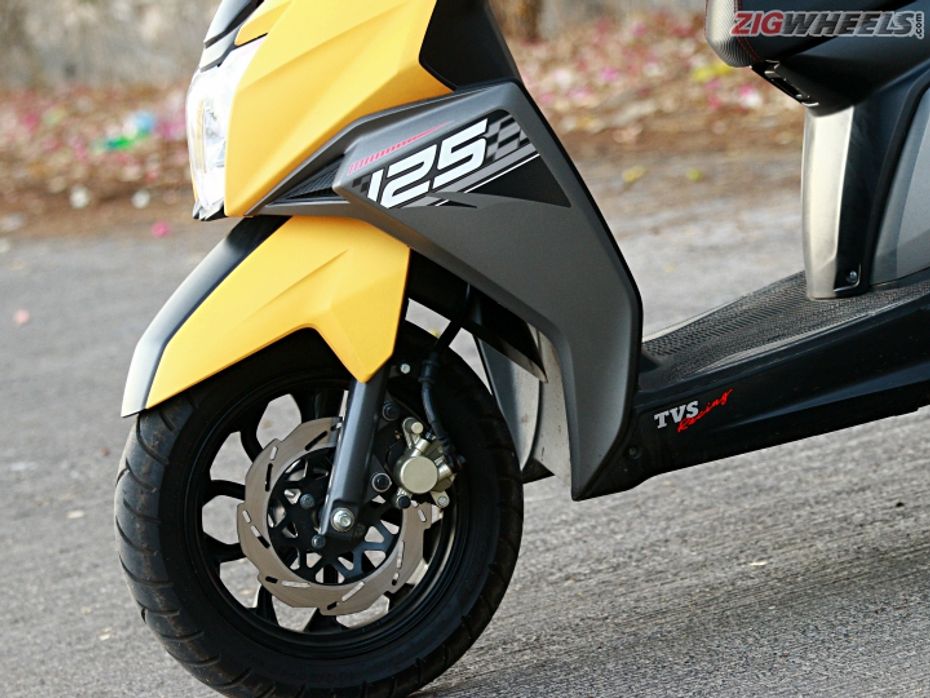
What we aren’t big fans of on the NTorq, is the feel from the front brake. The bite-point is quite difficult to judge and the bite itself isn’t very sharp either. But squeeze the lever hard, and deceleration is progressive. The rear drum has a sharper bite and has a tendency of locking up under very hard braking. However, apply the two together and the scooter comes to a stop without any drama or tyre squeal. During our tests, it shed speeds from 60-0kmph in 18.93 metres.
Comfort
Riders below 6 feet may struggle a bit on the SR 125. While the seat looks small, it’s surprisingly roomy enough even for someone on the heavier side.
The Access gets the longest and widest seat here, a must need for a proper family-oriented scooter.
The seat height on the NTorq is quite low so it's accessible to a lot more riders. But a short seat means that riders on the heavier side will have the edge of the seat pinching in.
|
TVS NTorq |
Suzuki Access |
Aprilia SR 125 |
|
|
Front Suspension |
Telescopic |
Telescopic |
Telescopic |
|
Rear Suspension |
Gas filled, Hydraulic Type, Coil Spring Monoshock |
Hydraulic Monoshock |
Hydraulic Monoshock |
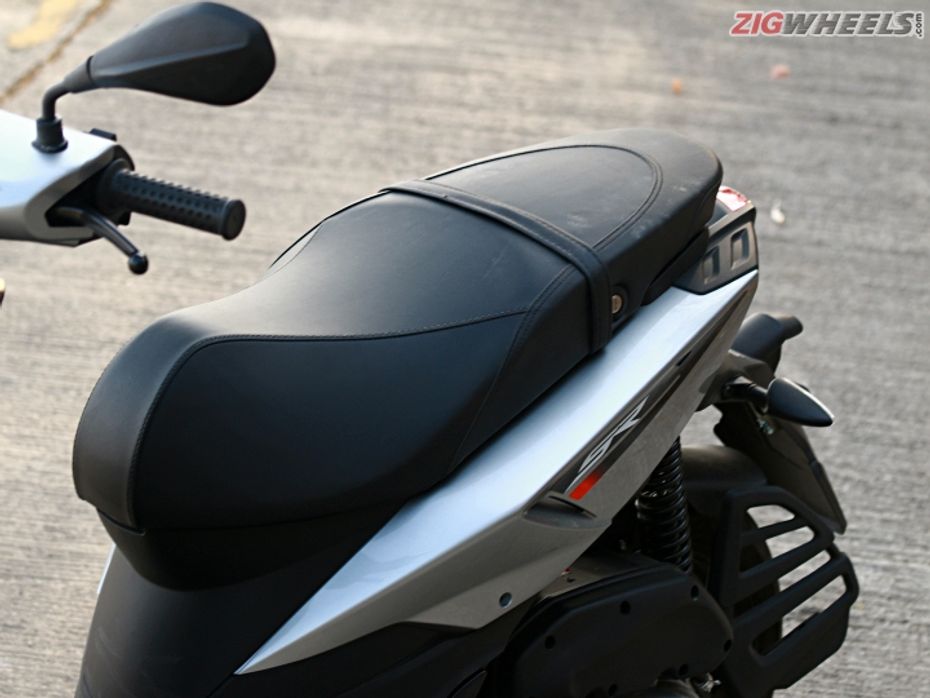
When it comes to scooters, we often spend plenty of time in the city, which means seat comfort is of utmost importance. So, after thorough testing, we came across some concerns with the Aprilia SR 125. The seat is quite stiff but isn’t uncomfortable, slimming down near the thigh section. I am 6-feet tall and can manage to plant both my feet on the ground without any problem. Relatively shorter people might struggle a bit though. That said, the pillion seat looks small but surprisingly has a decent amount of space, even for someone on the heavier side. But it does miss out on grab rails as standard, with Aprilia offering them as optional accessories instead.
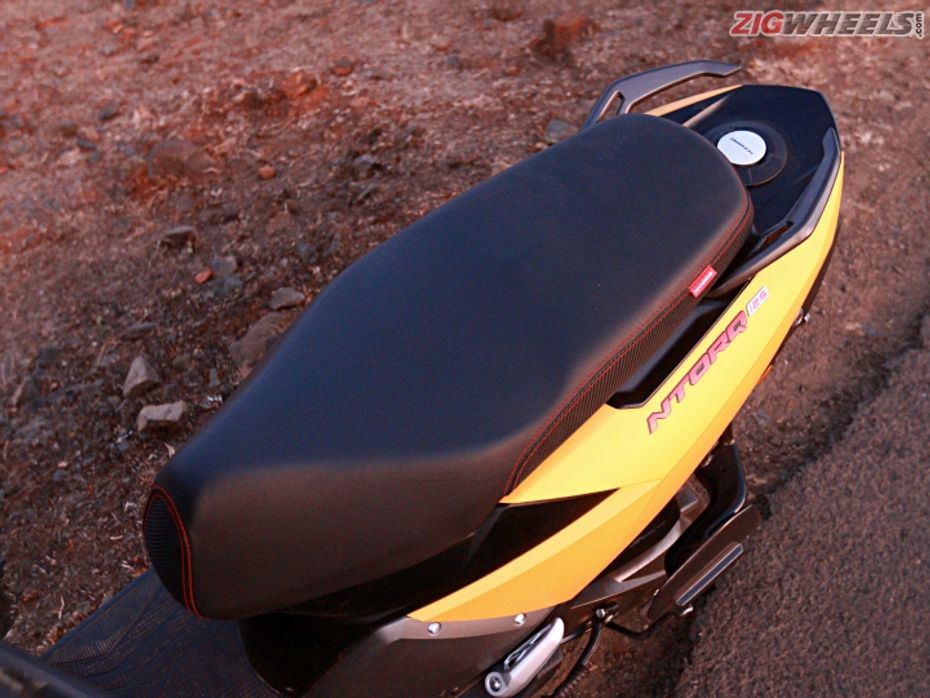
The NTorq is accessible to a much larger audience as the seat height is quite low and it’s narrow at the front. The seat is plush and comfy, so even longer hours in the saddle shouldn’t be a problem. But as seen in our test against the Honda Grazia, the rear portion is raised, so climbing on is a slight issue for shorter pillions. Even the seat area isn’t too large, so it might not win any brownie points with larger pillions. Average sized people though should be fine.
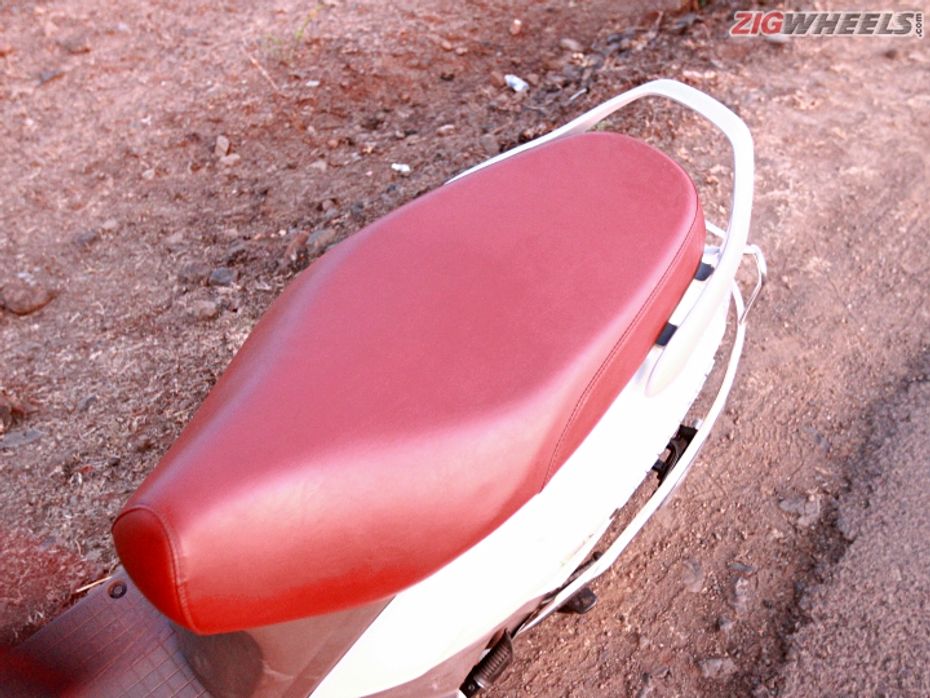
With a pillion aboard, the SR’s ride quality sees a significant improvement, thanks to the rear suspension getting compressed a bit, and the front end getting just light enough to avoid feeling jarring. The Access’ front end, on the other hand, feels a little too light for comfort, with a pillion aboard. TVS’ expertise in suspension really shines through on the NTorq though, as even with a pillion sitting at the back, the scooter maintains the same poise it does with just the rider.
Ergonomics
The riding posture on the NTorq is very natural, with the low-set floorboard and the high-set handlebar.
The floorboard is the smallest of the lot. So the laptop bag goes on your shoulders.
The floorboard is high-set, which means taller riders will have their knees hitting the handlebar while taking turns.
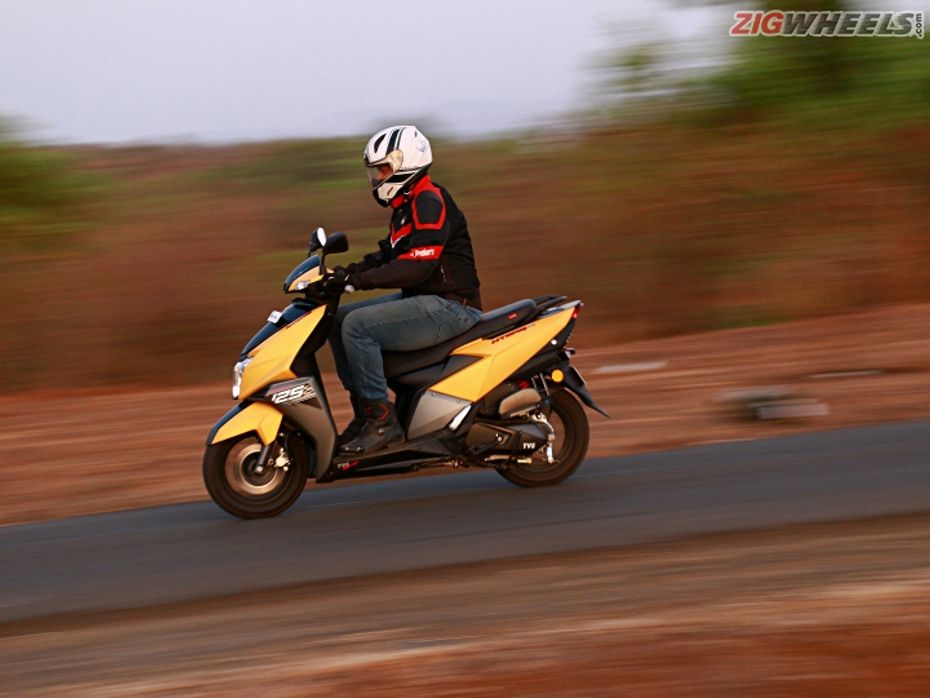
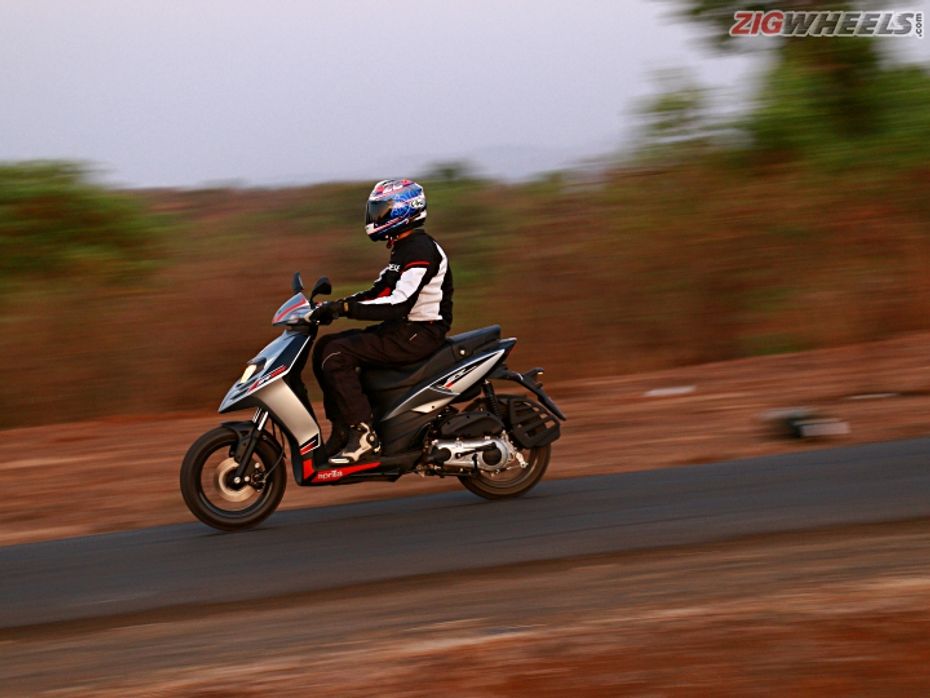
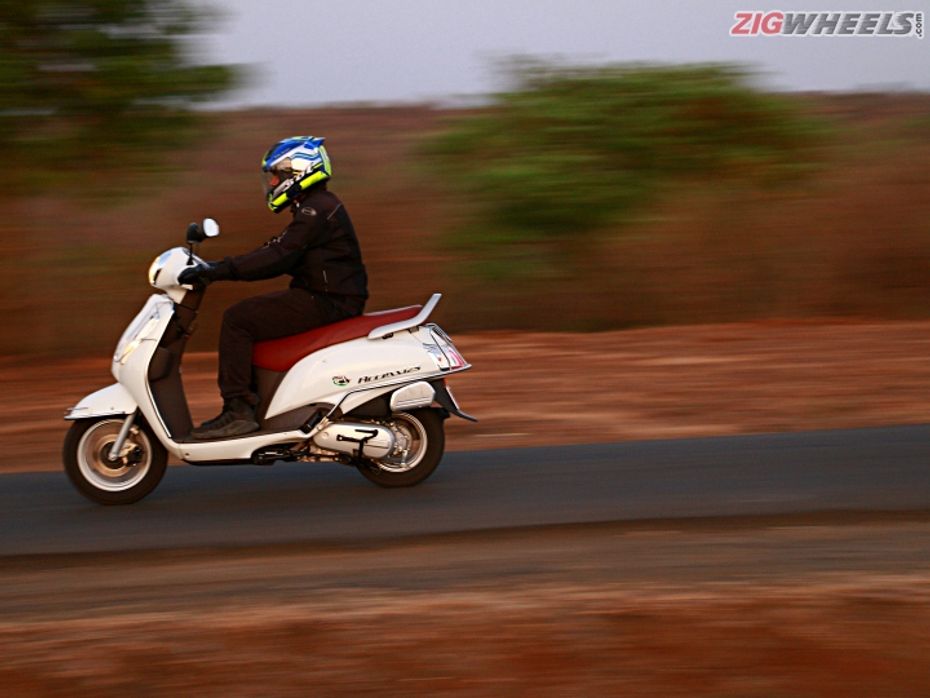
How Thirsty Are They?
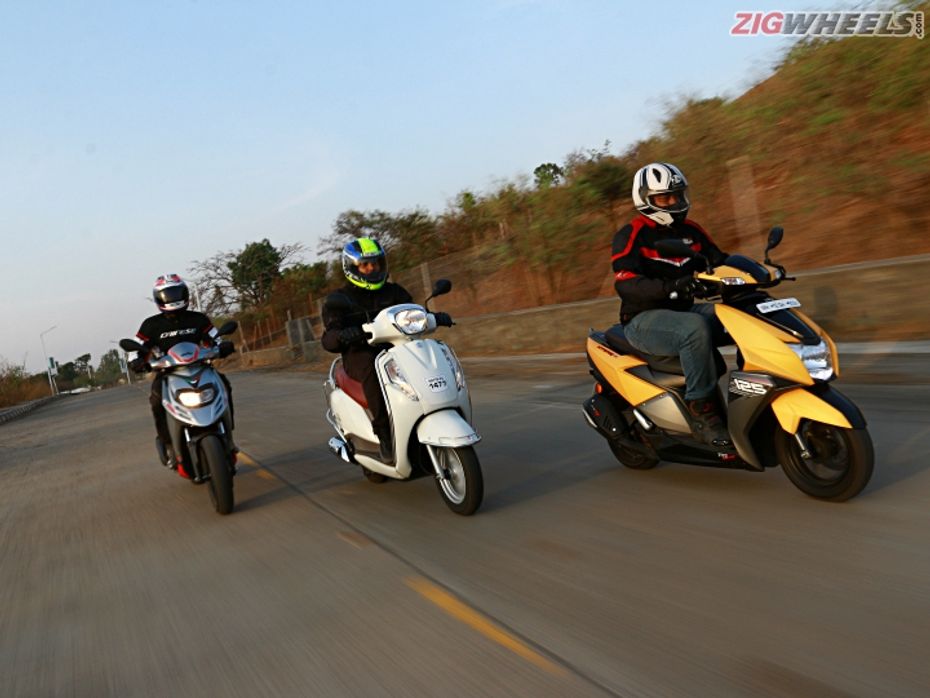
|
TVS NTorq |
Suzuki Access |
Aprilia SR 125 |
|
|
Fuel Tank Capacity |
5.0 litres |
5.6 litres |
6.6 litres |
Here’s the catch though. The SR 125 gets the largest fuel tank here, allowing you to carry 6.6 litres of fuel. That certainly will mean lesser fuel stops.
Verdict
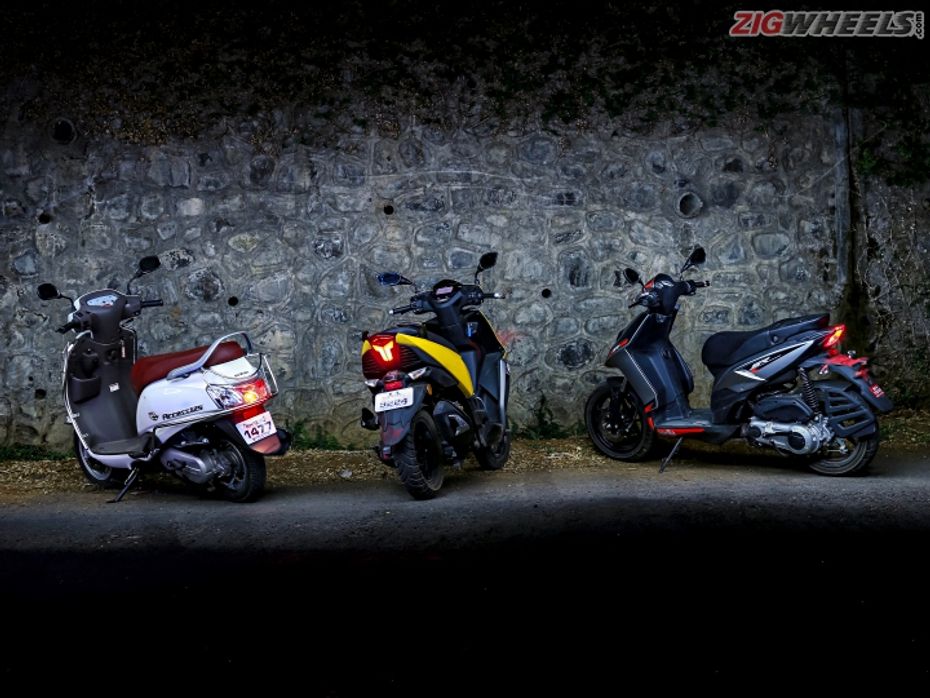
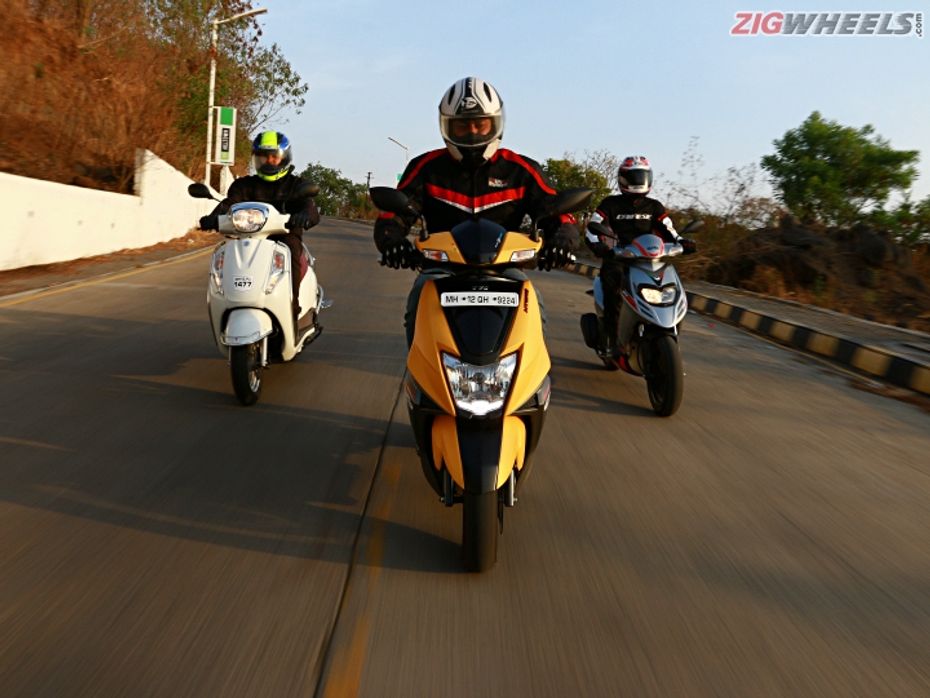


TVS NTorq 125 Call Of Design Concludes. Winner Takes Home A Brand New...

Aprilia SR 125: Road Test Review

TVS NTorq 125 Gets Even Sportier With Race Edition

Opinion: TVS Ntorq 125 Race Edition - Does It Make Sense Right Now?

Yamaha Cygnus Gryphus Takes On The TVS NTorq 125 Race XP On Paper

TVS NTorq vs Aprilia SR 125 : Which is the best sporty scooter? +...

TVS NTorq vs Aprilia SR125 vs Suzuki Access - Which is the best 125cc...

TVS NTorq 125 vs Honda Grazia: Comparison Review

TVS NTorq vs Honda Grazia Road Test Review

125cc Mega Scooter Comparison | Which Is India’s Most Fun 125cc...
 Honda Activa 6G
Honda Activa 6G
![Bajaj Chetak [2020 - 2024] Bajaj Chetak [2020 - 2024]](https://images.zigcdn.com/images/spacer.png) Bajaj Chetak [2020 - 2024]
Bajaj Chetak [2020 - 2024]
 Suzuki Burgman Street
Suzuki Burgman Street
 Hero Xoom 125
Hero Xoom 125
 Honda Activa 125
Honda Activa 125
India's largest automotive community
 TVS Jupiter
Rs. 74,691
TVS Jupiter
Rs. 74,691
 TVS Jupiter 125
Rs. 79,299
TVS Jupiter 125
Rs. 79,299
 TVS iQube
Rs. 1.07 Lakh
TVS iQube
Rs. 1.07 Lakh
 TVS XL100
Rs. 44,999
TVS XL100
Rs. 44,999
 TVS Scooty Zest
Rs. 74,476
TVS Scooty Zest
Rs. 74,476
 TVS Apache RTR 160
Rs. 1.20 Lakh
TVS Apache RTR 160
Rs. 1.20 Lakh
 TVS Raider
Rs. 85,010
TVS Raider
Rs. 85,010
 TVS Ronin
Rs. 1.35 Lakh
TVS Ronin
Rs. 1.35 Lakh
 TVS Apache RTR 160 4V
Rs. 1.24 Lakh
TVS Apache RTR 160 4V
Rs. 1.24 Lakh
 TVS Apache RTR 310
Rs. 2.49 Lakh
TVS Apache RTR 310
Rs. 2.49 Lakh
 Suzuki Access 125
Rs. 81,700
Suzuki Access 125
Rs. 81,700
 TVS NTORQ 125
Rs. 86,841
TVS NTORQ 125
Rs. 86,841
 TVS Jupiter
Rs. 74,691
TVS Jupiter
Rs. 74,691
 Honda Activa 6G
Rs. 78,684
Honda Activa 6G
Rs. 78,684
 Honda Activa 125
Rs. 94,422
Honda Activa 125
Rs. 94,422